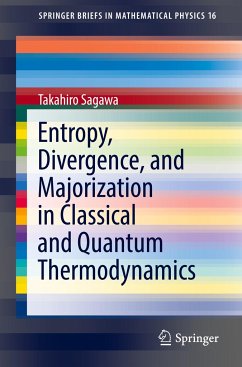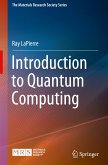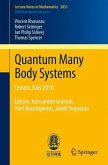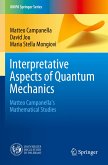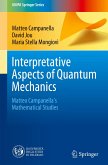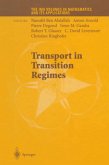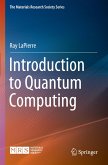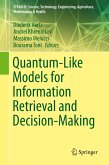Rich information-theoretic structure in out-of-equilibrium thermodynamics exists in both the classical and quantum regimes, leading to the fruitful interplay among statistical physics, quantum information theory, and mathematical theories such as matrix analysis and asymptotic probability theory. The main purpose of this book is to clarify how information theory works behind thermodynamics and to shed modern light on it.
The book focuses on both purely information-theoretic concepts and their physical implications. From the mathematical point of view, rigorous proofs of fundamental properties of entropies, divergences, and majorization are presented in a self-contained manner. From the physics perspective, modern formulations of thermodynamics are discussed, with a focus on stochastic thermodynamics and resource theory of thermodynamics. In particular, resource theory is a recently developed field as a branch of quantum information theory to quantify "useful resources" and has an intrinsic connection to various fundamental ideas of mathematics and information theory. This book serves as a concise introduction to important ingredients of the information-theoretic formulation of thermodynamics.
The book focuses on both purely information-theoretic concepts and their physical implications. From the mathematical point of view, rigorous proofs of fundamental properties of entropies, divergences, and majorization are presented in a self-contained manner. From the physics perspective, modern formulations of thermodynamics are discussed, with a focus on stochastic thermodynamics and resource theory of thermodynamics. In particular, resource theory is a recently developed field as a branch of quantum information theory to quantify "useful resources" and has an intrinsic connection to various fundamental ideas of mathematics and information theory. This book serves as a concise introduction to important ingredients of the information-theoretic formulation of thermodynamics.
"The book has three appendices on quantum divergences and their monotonicity, hypothesis testing and asymptotic equipartition properties. A large number of references are cited at the end of the book. The book presents wealth of theoretical information on quantum information theory. ... The book may be used as a reference for the researchers in quantum information theory." (K. N. Shukla, zbMATH 1505.80001, 2023)

